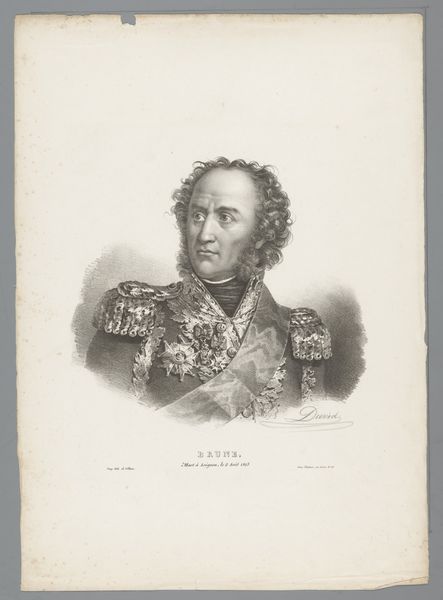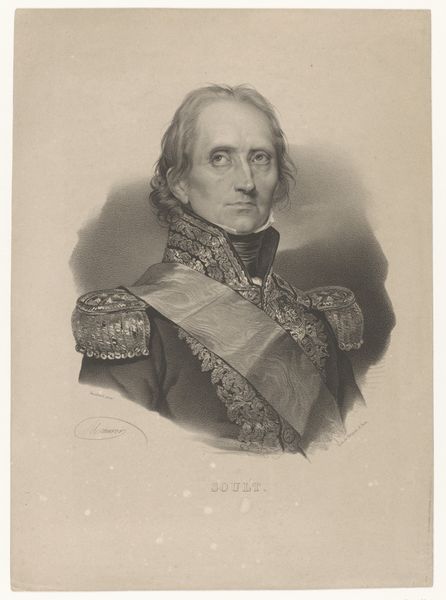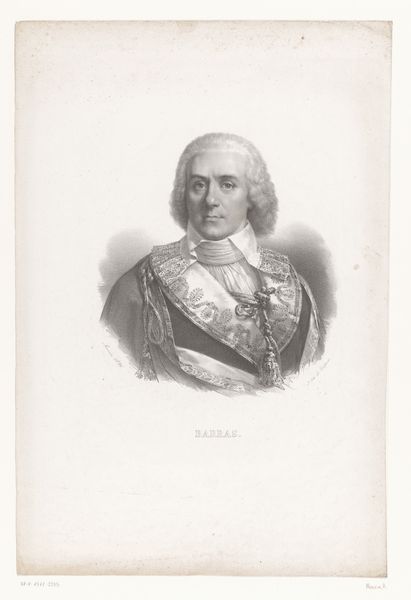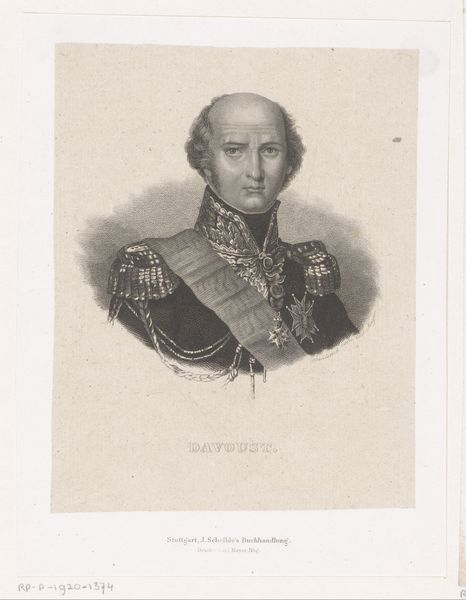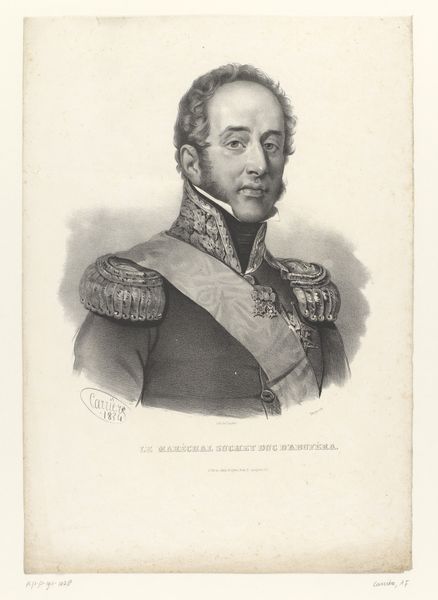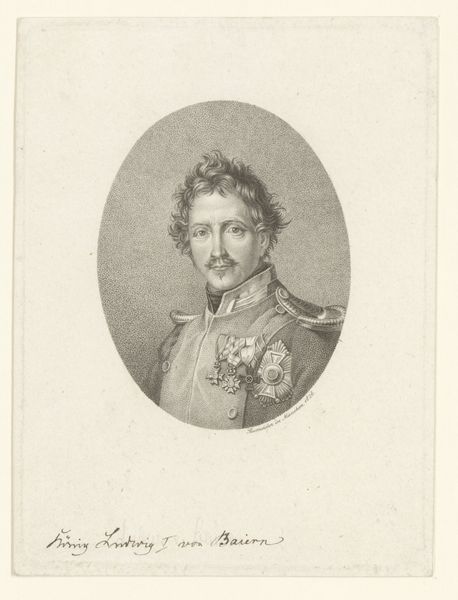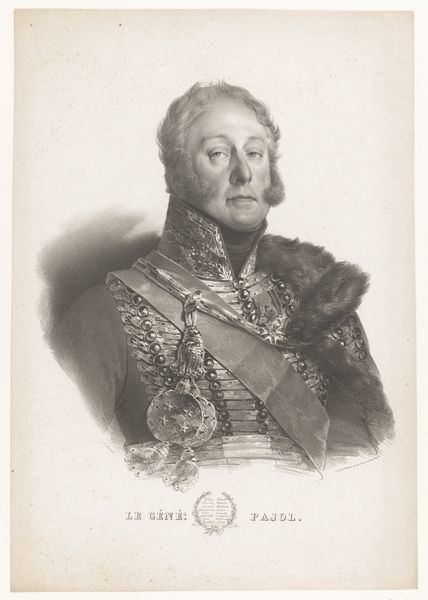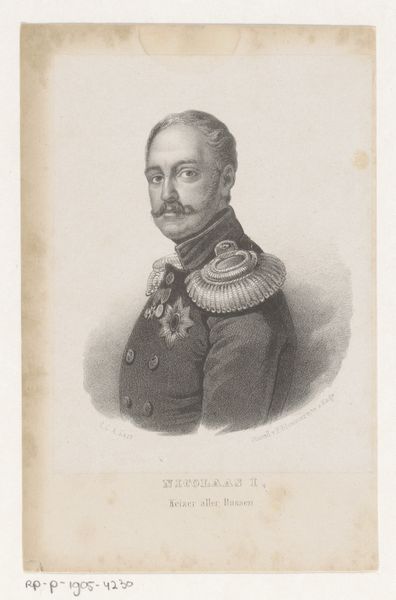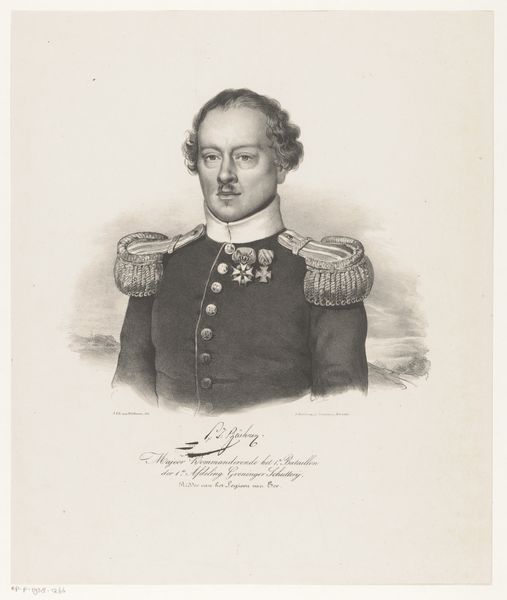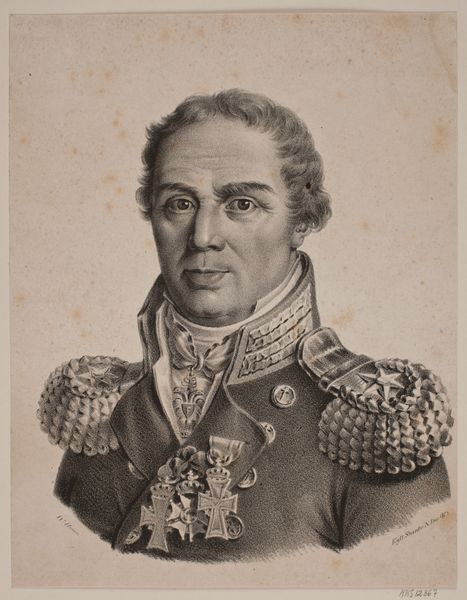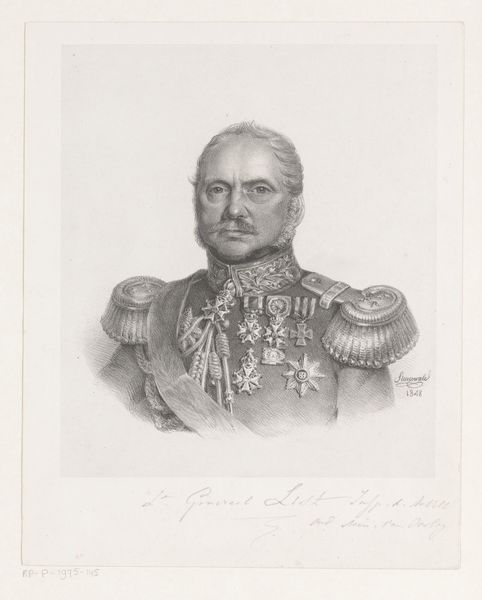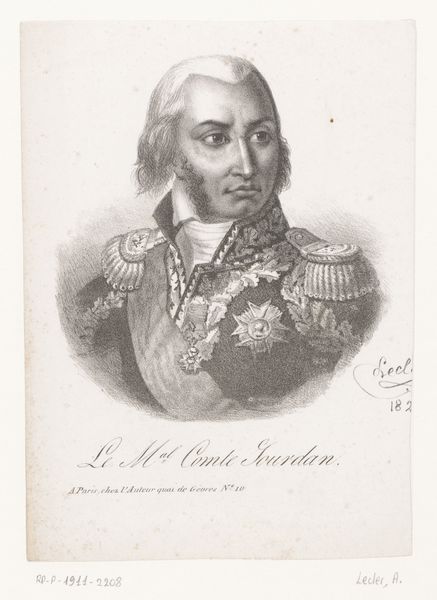
drawing, pencil
#
portrait
#
pencil drawn
#
drawing
#
facial expression drawing
#
light pencil work
#
pencil sketch
#
personal sketchbook
#
portrait reference
#
pencil drawing
#
romanticism
#
pencil
#
animal drawing portrait
#
portrait drawing
#
pencil work
Dimensions: height 153 mm, width 115 mm
Copyright: Rijks Museum: Open Domain
This is a portrait of Nicolas Jean-de-Dieu Soult, made by Nicolas Maurin in the early 19th century. The image is a lithograph, a printmaking technique that relies on the chemical repulsion of oil and water. To create this image, the artist would have drawn on a flat stone with a greasy crayon, then treated the surface so that ink only adhered to the drawn areas. The print captures fine details, from the subject’s hair to the elaborate embroidery of his uniform. Lithography emerged as a relatively inexpensive method, allowing for mass production of images, and widespread distribution. This democratization had a profound impact on visual culture, making art more accessible, and enabling new forms of political expression. Consider the labor involved, from quarrying the limestone to the skilled hand of the artist, to the printing process itself. It reminds us that art is not just about the image, but about the means of its making and circulation.
Comments
No comments
Be the first to comment and join the conversation on the ultimate creative platform.
